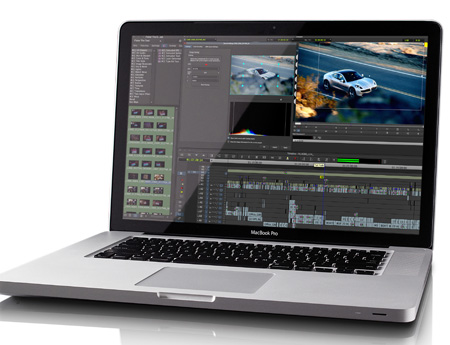Editing Systems Get Recut for Speed

As many broadcasters work to put software at the center of their broadcast operations, the transition from hardware- to software-based infrastructures is also radically changing the way non-linear editing systems are developed, used and deployed.
These editing systems—some of the first software to make their way into TV stations and network operations—are increasingly being revamped to be more tightly integrated with larger software systems such as Grass Valley’s Stratus and Avid’s MediaCentral, or are being used as part of larger cloud-based or distributed production systems, such as the Adobe Anywhere product.
Avid, for example, has been upgrading its Media Composer editing software as part of an effort to build out its MediaCentral platform, which is designed to manage the process of both creating and distributing content.
David Colantuoni, senior director of broadcast, storage and editor product management at Avid, explains that the company has been taking various elements of its offerings, such as the Media Composer player engine or its unifi ed indexing features, and making these tools available on multiple applications and workflows in MediaCentral.
This provides for more standardized interfaces and better features in both Media Composer and the larger MediaCentral offering. “Now all the products can take advantage of those tools, which makes the workflows much more efficient,” he says.
Very importantly, it has also opened up the platform to outside vendors and competitors so they can be certified for use on MediaCentral, says Colantuoni. This expands the range of tools so that an editor using Media Composer could access a powerful phonetic indexing tool provided by an outside company, Nexidia’s, to find content.
These integrations can significantly speed up the process of content creating and editing, adds Ed Casaccia, senior segment manager for news at Grass Valley, which offers both the Edius editing software and the larger Stratus media workflow application framework. He notes that in the past, a piece of edited content for broadcast might have had to be manually reformatted for online, mobile and other digital platforms.
Broadcasting & Cable Newsletter
The smarter way to stay on top of broadcasting and cable industry. Sign up below
“Today you can have a preconfigured workflow in Stratus that can automatically make sure it gets to the right destination with the right transcoding and metadata,” Casaccia says. “It can take 10 or 15 steps out of the workflow.”
Metadata is King
These larger systems are particularly important for preserving metadata. “Retaining that metadata [throughout the production and distribution process] is essential not only for rights management and monetization, but also for automating workflows,” says Ben Davenport, director of marketing at Dalet.
Tight integration between Dalet’s media asset management (MAM) system and its editing Onecut software or popular editing systems from Adobe, Avid and others also creates a consistent interface between the MAM and the editing tools, Davenport says. This makes the software easier to use and allows more processes to be automated in the delivery of content to multiple platforms.
“The user can focus on the creative process and not the technical requirements of outputs and formats,” Davenport adds.
Adobe, Avid, Grass Valley and the major providers of editing software widely used in broadcast operations are also increasingly offering cloud-based systems that make it much easier to share and access content from the field. “It creates a newsroom without walls,” says Casaccia. “You have the same experience whether you’re editing in a newsroom or under blue sky.”
Mitch Wood, senior solutions engineer at Adobe, says his company has seen increased interest from station groups for their Adobe Anywhere offering. “It gives them the ability to work remotely and capture news and ingest it into the server where it can be shared with anyone,” Wood says. “You can even have two editors working on the same sequence at the same time.”
Handling a wide array of formats natively has also been a major focus for Adobe, Avid, Grass Valley and other providers of editing systems.
Increasing the number of formats can help users reduce the amount of time they must spend transcoding content. Video journalists at Hearst Television, for example, save time using Adobe by editing directly off the storage card.
“We realize we’re not the only tool in the market,” Wood says. “Broadcast is a very important market segment so we work with broadcasters very closely and make sure we can support and integrate with third-party products. At last count we had some 82 partners directly integrating with Premiere Pro.”
Distributed production systems that allow users to access editing tools and content via an Internet connection in the cloud have also been flooding into the market. These include Adobe Anywhere, Aframe’s distributed production system, cloud-based versions of Avid Media Composer, Sony’s Ci platform and Grass Valley’s cloud-based capabilities with Stratus.
Cloud-based production management tools are also being launched by providers of ENG and cellular-bonded technologies. LiveU, for example, has an alliance with Panasonic to permit users to share content in the cloud.
In addition, Panasonic is working with Aframe so that users of its cameras can directly upload content to the cloud, where it can be shared and edited.
In November, Aframe released a new version of its cloud video platform that the company says will improve user efficiency and help them streamline or automate a number of features. Overall, the upgrade will boost performance by five times.
As broadcasters and producers work to share more content in the editing process, providers of storage solutions are looking to make those files more secure and to provide better ways of managing those storage systems.
EditShare, for example, offers shared storage that can be accessed both inside the facility and remotely with a Web browser. “The product works with all the different [non-linear editing systems] so they work with different software in different places,” says Grant Carroll, director of workflow design, post-production at EditShare.
